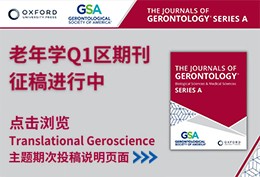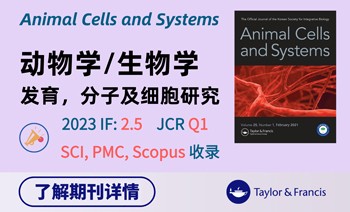Our official English website, www.x-mol.net, welcomes your
feedback! (Note: you will need to create a separate account there.)
Extended reality used in the treatment of phantom limb pain: a multicenter, double-blind, randomized controlled trial.
Pain ( IF 5.9 ) Pub Date : 2024-09-05 , DOI: 10.1097/j.pain.0000000000003384 Eva Lendaro 1, 2 , Corry K Van der Sluis 3 , Liselotte Hermansson 4, 5 , Lina Bunketorp-Käll 6, 7 , Helena Burger 8, 9 , Els Keesom 3, 10 , Cathrine Widehammar 5 , Maria Munoz-Novoa 11, 12 , Brian E McGuire 13 , Paul O'Reilly 13 , Eric J Earley 1, 12, 14, 15 , Sonam Iqbal 11, 12 , Morten B Kristoffersen 3, 12, 16 , Anita Stockselius 17 , Lena Gudmundson 17 , Wendy Hill 18 , Martin Diers 19 , Kristi L Turner 20 , Thomas Weiss 21 , Max Ortiz-Catalan 1, 12, 22, 23
Pain ( IF 5.9 ) Pub Date : 2024-09-05 , DOI: 10.1097/j.pain.0000000000003384 Eva Lendaro 1, 2 , Corry K Van der Sluis 3 , Liselotte Hermansson 4, 5 , Lina Bunketorp-Käll 6, 7 , Helena Burger 8, 9 , Els Keesom 3, 10 , Cathrine Widehammar 5 , Maria Munoz-Novoa 11, 12 , Brian E McGuire 13 , Paul O'Reilly 13 , Eric J Earley 1, 12, 14, 15 , Sonam Iqbal 11, 12 , Morten B Kristoffersen 3, 12, 16 , Anita Stockselius 17 , Lena Gudmundson 17 , Wendy Hill 18 , Martin Diers 19 , Kristi L Turner 20 , Thomas Weiss 21 , Max Ortiz-Catalan 1, 12, 22, 23
Affiliation
Phantom limb pain (PLP) represents a significant challenge after amputation. This study investigated the use of phantom motor execution (PME) and phantom motor imagery (PMI) facilitated by extended reality (XR) for the treatment of PLP. Both treatments used XR, but PME involved overt execution of phantom movements, relying on the decoding of motor intent using machine learning to enable real-time control in XR. In contrast, PMI involved mental rehearsal of phantom movements guided by XR. The study hypothesized that PME would be superior to PMI. A multicenter, double-blind, randomized controlled trial was conducted in 9 outpatient clinics across 7 countries. Eighty-one participants with PLP were randomly assigned to PME or PMI training. The primary outcome was the change in PLP, measured by the Pain Rating Index, from baseline to treatment cessation. Secondary outcomes included various aspects related to PLP, such as the rate of clinically meaningful reduction in pain (CMRP; >50% pain decrease). No evidence was found for superiority of overt execution (PME) over imagery (PMI) using XR. PLP decreased by 64.5% and 68.2% in PME and PMI groups, respectively. Thirty-seven PME participants (71%) and 19 PMI participants (68%) experienced CMRP. Positive changes were recorded in all other outcomes, without group differences. Pain reduction for PME was larger than previously reported. Despite our initial hypothesis not being confirmed, PME and PMI, aided by XR, are likely to offer meaningful PLP relief to most patients. These findings merit consideration of these therapies as viable treatment options and alternatives to pharmacological treatments.
中文翻译:

用于治疗幻肢痛的扩展现实:一项多中心、双盲、随机对照试验。
幻肢痛 (PLP) 是截肢后的重大挑战。本研究调查了使用扩展现实 (XR) 促进的幻模运动执行 (PME) 和幻模运动图像 (PMI) 治疗 PLP。两种治疗方法都使用 XR,但 PME 涉及幻象运动的公开执行,依赖于使用机器学习对运动意图的解码,从而在 XR 中实现实时控制。相比之下,PMI 涉及对 XR 引导的幻象动作进行心理排练。该研究假设 PME 将优于 PMI。在 7 个国家的 9 个门诊诊所进行了一项多中心、双盲、随机对照试验。81 名 PLP 参与者被随机分配到 PME 或 PMI 训练组。主要结局是 PLP 从基线到治疗停止的变化,通过疼痛评定量指数衡量。次要结局包括与 PLP 相关的各个方面,例如有临床意义的疼痛减轻率 (CMRP;>50% 疼痛减轻)。没有发现证据表明使用 XR 的公开执行 (PME) 优于图像 (PMI)。PME 和 PMI 组的 PLP 分别下降了 64.5% 和 68.2%。37 名 PME 参与者 (71%) 和 19 名 PMI 参与者 (68%) 经历了 CMRP。所有其他结局均记录了积极的变化,无组别差异。PME 的疼痛减轻程度大于以前报道的。尽管我们最初的假设尚未得到证实,但在 XR 的帮助下,PME 和 PMI 可能会为大多数患者提供有意义的 PLP 缓解。这些发现值得考虑将这些疗法作为可行的治疗选择和药物治疗的替代方案。
更新日期:2024-09-05
中文翻译:

用于治疗幻肢痛的扩展现实:一项多中心、双盲、随机对照试验。
幻肢痛 (PLP) 是截肢后的重大挑战。本研究调查了使用扩展现实 (XR) 促进的幻模运动执行 (PME) 和幻模运动图像 (PMI) 治疗 PLP。两种治疗方法都使用 XR,但 PME 涉及幻象运动的公开执行,依赖于使用机器学习对运动意图的解码,从而在 XR 中实现实时控制。相比之下,PMI 涉及对 XR 引导的幻象动作进行心理排练。该研究假设 PME 将优于 PMI。在 7 个国家的 9 个门诊诊所进行了一项多中心、双盲、随机对照试验。81 名 PLP 参与者被随机分配到 PME 或 PMI 训练组。主要结局是 PLP 从基线到治疗停止的变化,通过疼痛评定量指数衡量。次要结局包括与 PLP 相关的各个方面,例如有临床意义的疼痛减轻率 (CMRP;>50% 疼痛减轻)。没有发现证据表明使用 XR 的公开执行 (PME) 优于图像 (PMI)。PME 和 PMI 组的 PLP 分别下降了 64.5% 和 68.2%。37 名 PME 参与者 (71%) 和 19 名 PMI 参与者 (68%) 经历了 CMRP。所有其他结局均记录了积极的变化,无组别差异。PME 的疼痛减轻程度大于以前报道的。尽管我们最初的假设尚未得到证实,但在 XR 的帮助下,PME 和 PMI 可能会为大多数患者提供有意义的 PLP 缓解。这些发现值得考虑将这些疗法作为可行的治疗选择和药物治疗的替代方案。

































 京公网安备 11010802027423号
京公网安备 11010802027423号